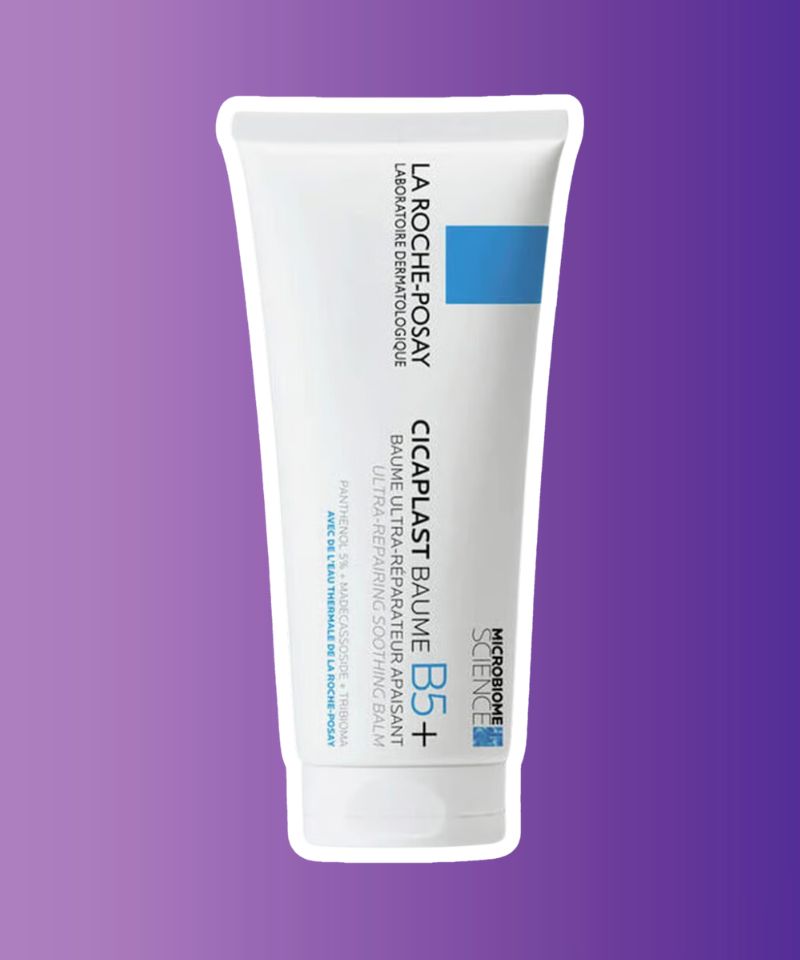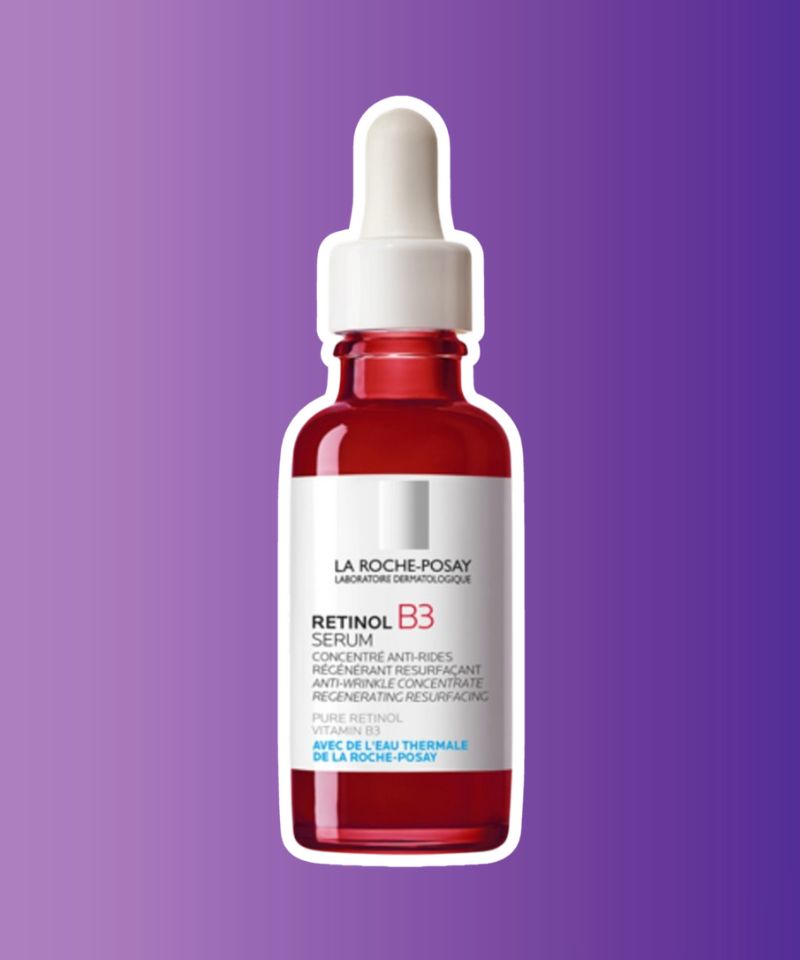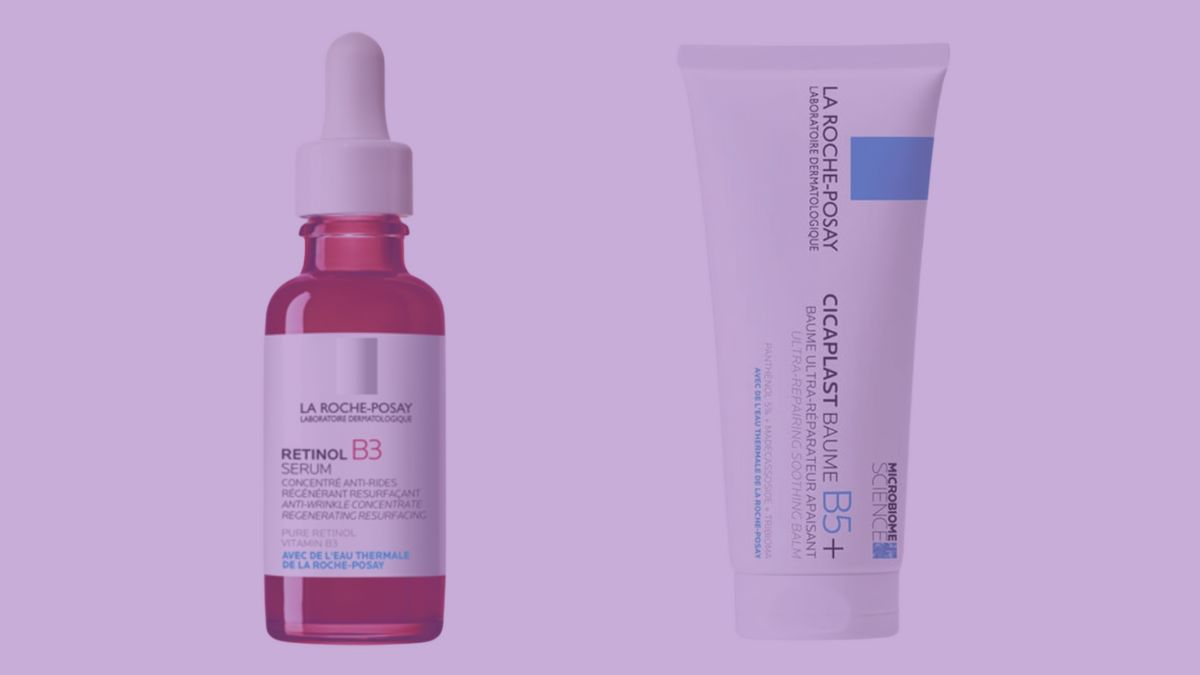Cicaplast Baume B5 can be a fantastic addition to your retinol journey, as it can help mitigate the initial dryness, redness, peeling, and irritation that often arise when introducing retinol to your skincare routine.
However, how exactly does Cicaplast Baume B5 work to combat these side effects, and how should you properly incorporate it into your retinol routine for maximum effect without compromising the latter’s efficacy and results?
In this article, I will delve into the science behind Cicaplast Baume B5 and retinol and provide tips on combining the two products for optimal results.
Can You Use Cicaplast Baume B5 with Retinol?
Yes, Cicaplast Baume B5 can be used with retinol products to relieve dryness, redness, peeling, and irritation that may arise when introducing retinol into your skincare routine.
Additionally, introducing Cicaplast Baume B5 to a retinol routine can soften and smooth out the skin’s surface and accelerate retinol’s benefits.
What is Cicaplast Baume B5?

Cicaplast Baume B5 is a multi-purpose balm designed to soothe, protect, and repair the skin.
It is created by La Roche-Posay, a French skincare brand known for their expert formulations for sensitive and compromised skin.
RELATED: Cicaplast Baume B5 vs. Cicaplast Gel B5: Which One is Better?
Key Ingredients in Cicaplast Baume B5
Cicaplast Baume B5 is formulated with a plethora of beneficial ingredients that aim to repair, strengthen, and nourish the skin barrier and prevent moisture loss while protecting the skin from external pathogens and symptoms such as dryness, irritation, and discomfort.
Here are a few superstar ingredients that make Cicaplast Baume B5 a must-have in your skincare routine:
Panthenol
Also known as provitamin B5, panthenol is a key ingredient in Cicaplast Baume B5 that deeply hydrates the skin and prevents moisture loss.
Additionally, panthenol supports the skin’s barrier function, promoting regeneration and reducing inflammation, making it particularly beneficial for dry, damaged, or sensitive skin.
Madecassoside
Derived from the Centella Asiatica plant, madecassoside is celebrated for its soothing and restorative properties.
It plays a crucial role in Cicaplast Baume B5 by calming irritation and redness and promoting the healing of damaged skin.
Furthermore, madecassoside has anti-inflammatory benefits, making it an excellent ingredient for healing and improving the appearance of scars and blemishes.
Shea Butter
Shea butter is a natural fat extracted from the nuts of the Shea tree.
It is renowned for its moisturizing and nourishing properties, making it a go-to ingredient for dry and dehydrated skin.
In Cicaplast Baume B5, shea butter helps repair and protect the skin’s barrier, locking in moisture and preventing dehydration and further damage.
Its high concentration of fatty acids also provides anti-inflammatory benefits, reducing redness and irritation.
Zinc Gluconate
Zinc gluconate is a mineral that plays an essential role in skin health.
It has anti-inflammatory and antiseptic properties, helping to calm and heal the skin and almost instantly reducing the symptoms of active infections, such as redness and inflammation.
In Cicaplast Baume B5, zinc gluconate assists in repairing and protecting the skin’s barrier, promoting healing, and preventing irritation.
The Skin Benefits of Cicaplast Baume B5
Besides delivering an instant calming effect to irritated skin and visibly minimizing redness after mere minutes of application, here are a few long-term benefits of Cicaplast Baume B5:
Repairs the Skin Barrier: Cicaplast Baume B5 is infused with ingredients that collaborate to enhance the skin’s natural regeneration process, ensuring the integrity of the skin’s protective barrier is maintained.
Soothes Irritation and Redness: Cicaplast Baume B5 provides potent anti-inflammatory benefits, significantly reducing skin irritation, redness, and discomfort.
Nourishes and Moisturizes: With shea butter as a key ingredient, Cicaplast Baume B5 delivers rich, lasting hydration and nutrition to the skin to support a resilient skin barrier less susceptible to damage.
Protects Against External Aggressors: By reinforcing the skin’s barrier, Cicaplast Baume B5 protects against environmental stressors such as pollutants and irritants, minimizing skin damage.
Promotes Healing: The combination of healing and protective ingredients in Cicaplast Baume B5 accelerates the recovery of minor wounds, cuts, and abrasions and prevents scarring and infection.
The Side Effects of Cicaplast Baume B5
Cicaplast Baume B5 is generally well tolerated by even the most sensitive and reactive skin; however, its rich nature can leave a greasy layer on the skin’s surface, which may not be suitable for all skin types.
In some cases, individuals with very oily skin may experience excess shine after using the Cicaplast Baume B5, which makes it less than ideal as a day moisturizer.
Additionally, like with any product, there is always a risk of allergic reactions or sensitivities to certain ingredients.
If you have a known allergy to any ingredients in Cicaplast Baume B5, it is best to avoid using the product.
What is Retinol?

Retinol is a vitamin A derivative used in over-the-counter skincare products for its anti-aging and skin-refining benefits.
How Does Retinol Work?
When applied to the skin, retinol attaches to retinoid receptors and affects the growth and differentiation of skin cells.
This process regulates cell turnover, stimulates collagen production, and promotes cellular regeneration.
Retinol also has antioxidant properties that protect the skin from environmental stressors and prevent damage to the skin cells caused by free radicals.
The Skin Benefits of Retinol
By influencing cellular turnover and the way the skin cells grow and behave, retinol can promote various visible skin changes:
Reduces Lines and Wrinkles: Regular use of retinol boosts collagen production, significantly diminishing the appearance of lines and wrinkles.
Refines Skin Texture: Retinol replaces old, rough, and damaged skin cells with newer, smoother, and younger cells, visibly improving skin texture.
Fades Hyperpigmentation: Retinol accelerates cell regeneration, helping dark spots, age spots, and hyperpigmentation shed away rapidly, leading to a more even skin tone.
Controls Acne Breakouts: Its ability to regulate oil production, promote cell turnover, and clear out clogged pores makes retinol an effective acne treatment.
Strengthens Skin Barrier: By stimulating collagen production, retinol helps in strengthening the skin’s natural barrier, making it more resilient to environmental stressors.
Minimizes Pore Size: Retinol can help minimize enlarged pores by clearing out the cellular debris that causes them to stretch to accommodate it.
The Side Effects of Retinol
When retinol is introduced into your skincare routine, its action on the cells prompts a reaction, which includes a few adverse effects that can last anywhere from four to eight weeks until the skin acclimates to the active ingredient and achieves a state of balance.
These side effects can include:
Skin Irritation and Redness: Initial use of retinol may cause the skin to become irritated and red as the skin adjusts to the potent ingredient.
Dryness and Flaking: Retinol can lead to dryness and flaking due to increased cellular turnover, as old skin cells are shed more rapidly.
Increased Sun Sensitivity: Retinol-treated skin is more susceptible to sun damage, which is why the use of high-SPF sunscreen during the day is a must.
Temporary Breakouts: Some users may experience purging, where acne gets temporarily worse as the skin purges clogged pores.
Peeling Around Sensitive Areas: The skin is thinner on certain face areas, such as the eyes and mouth, so peeling may be more pronounced there.
Allergic Reactions: Though rare, some individuals may develop allergic reactions to retinol, characterized by severe itching, hives, or swelling.
How to Use Cicaplast Baume B5 with Retinol?
To effectively incorporate Cicaplast Baume B5 with retinol into your skincare routine, start by applying retinol to clean, dry skin in the evening, as this allows the active ingredient to work optimally during the skin’s natural regeneration process.
After the retinol has been fully absorbed—typically waiting about 20 to 30 minutes—follow up with a layer of Cicaplast Baume B5 to nourish and soothe the skin, reducing potential irritation and dryness caused by the retinol.
This combination should be limited to evening use, and it’s crucial to apply a broad-spectrum SPF during the day to protect the skin, as retinol can increase photosensitivity.
With consistent use, this regimen can enhance the skin’s overall appearance and health, maximizing the benefits of both products without overwhelming the skin.
On the other hand, if retinol is causing moderate to severe discomfort, you can buffer its intense effect by applying a layer of Cicaplast Baume B5 before the retinol.
The barrier created by Cicaplast Baume B5 can reduce skin sensitivity, allowing the retinol to work without irritation.
However, this method may slightly decrease the efficacy of retinol, so it’s best to use this technique only when necessary and not as a regular practice.
The post Can You Use Cicaplast Baume B5 With Retinol? first appeared on The Skin Care Culture.
#Cicaplast #Baume #Retinol


























